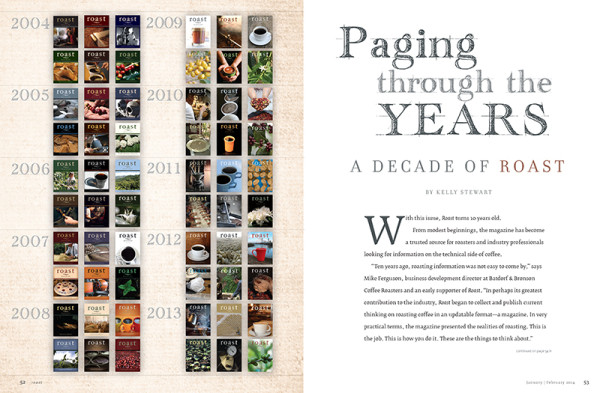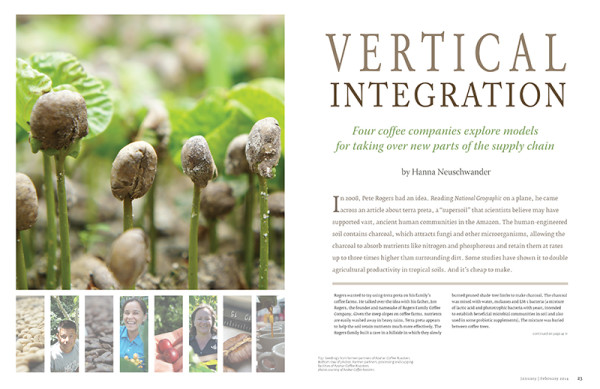The January/February issue of Roast Magazine (now shipping) is a special one, as it celebrates the 10-year anniversary of Roast, as well as the final issue for editor Kelly Stewart, who is leaving to focus on her growing family (read Kelly’s goodbye). For the issue, Stewart penned “Paging Through the Years,” which looks back at Roast’s first decade through the eyes of the coffee professionals who lean on it as a source of inspiration and education.
Following are previews of two January/February feature stories, which are joined in the issue by an update on the Ethiopia Commodities Exchange, a column from Jen Apodaca of Blue Bottle Coffee, a look at Ethiopian and Yemen naturals and a look back at a destination trip to Peru, among many other features and columns. Click here to subscribe to Roast Magazine.
PAGING THROUGH THE YEARS
A Decade of Roast
With this issue, Roast turns 10 years old. From modest beginnings, the magazine has become a trusted source for roasters and industry professionals looking for information on the technical side of coffee. “Ten years ago, roasting information was not easy to come by,” says Mike Ferguson, business development director at Batdorf & Bronson Coffee Roasters and an early supporter of Roast. “In perhaps its greatest contribution to the industry, Roast began to collect and publish current thinking on roasting coffee in an updatable format—a magazine. In very practical terms, the magazine presented the realities of roasting. This is the job. This is how you do it. These are the things to think about.” — by Kelly Stewart
Read more and subscribe to Roast Magazine here
VERTICAL INTEGRATION
Four coffee companies explore models for taking over new parts of the supply chain
In 2008, Pete Rogers had an idea. Reading National Geographic on a plane, he came across an article about terra preta, a “supersoil” that scientists believe may have supported vast, ancient human communities in the Amazon. The human-engineered soil contains charcoal, which attracts fungi and other microorganisms, allowing the charcoal to absorb nutrients like nitrogen and phosphorous and retain them at rates up to three times higher than surrounding dirt. Some studies have shown it to double agricultural productivity in tropical soils. And it’s cheap to make. — by Hanna Neuschwander.
Read more and subscribe to Roast Magazine here
Nick Brown
Nick Brown is the editor of Daily Coffee News by Roast Magazine.








Comment